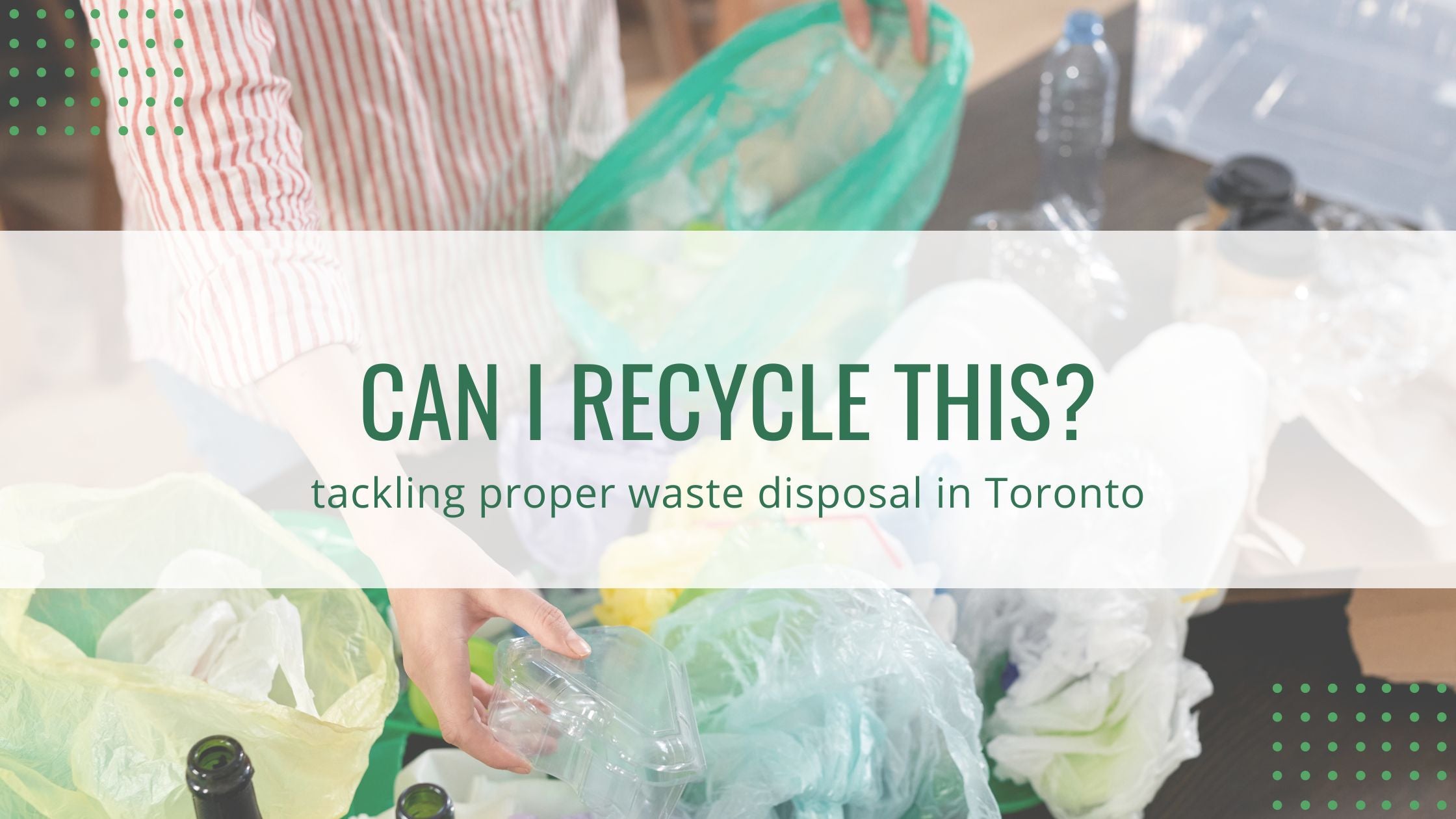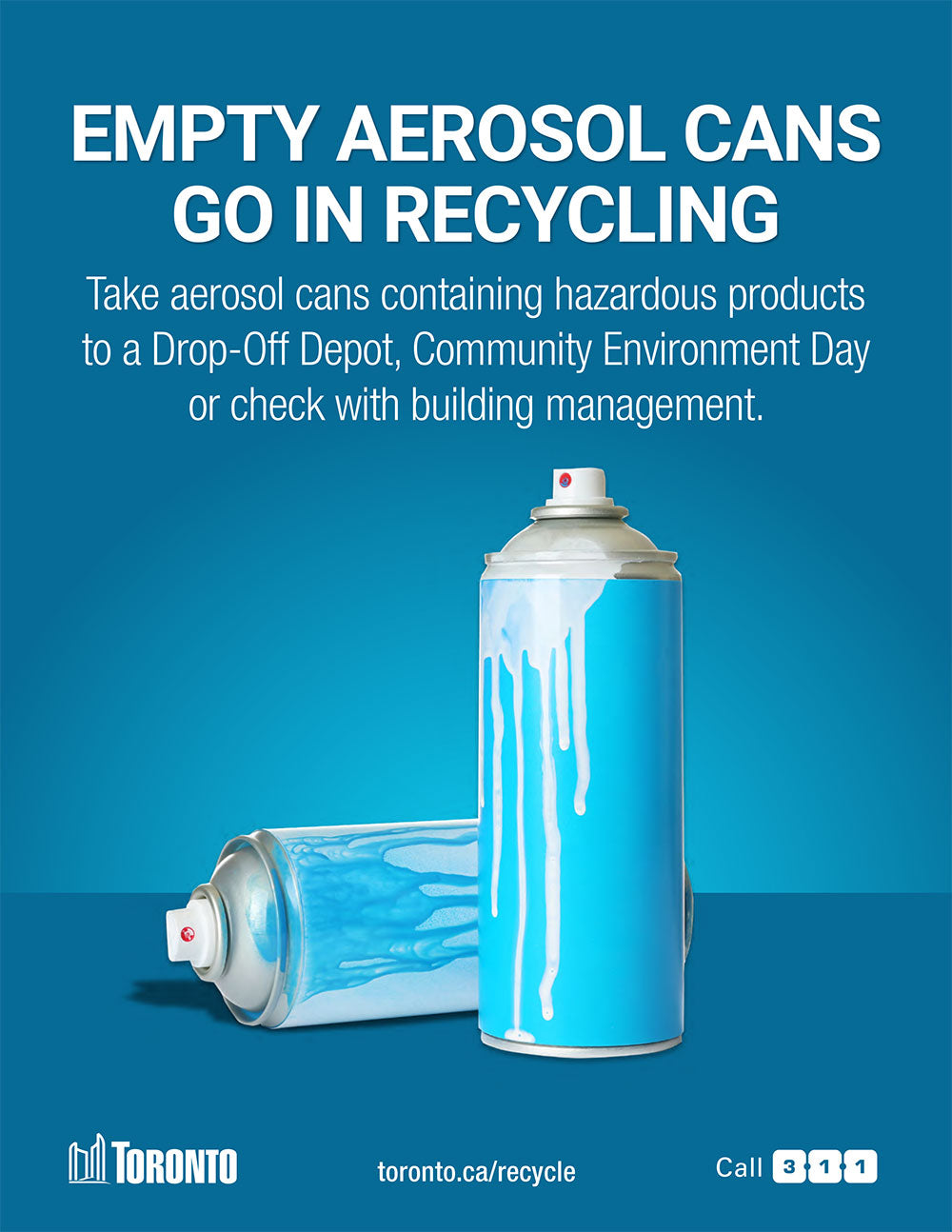Can I recycle this?
Share

You’re holding the black plastic container from last night’s takeout. It’s been rinsed clean, the recycle symbol on the bottom of the package reminds you of what you should be doing next, but can it go into your blue bin? The answer might surprise you.
Do we have to recycle?
According to the Government of Canada, Canadians throw away over 3 million tonnes of plastic waste every year. With only 9% being currently recycled, the rest goes directly into our dumpsters, landfills, greenspaces, and lakes. As these plastics break down into microplastics, they’re absorbed by local plants and wildlife, ultimately ending back onto our plate and into our bodies as science is now discovering.
If you’ve ever heard the expression, “you are what you eat”, the plastic problem in Canada is a prime example. By taking the time to properly recycle our used goods into new materials, you’re helping to keep plastic out of the environment, as well as reducing Canada’s overall energy consumption, and greenhouse gas emissions. So yes, we really should recycle.
Where does Toronto recycling go?
In Becoming a Compost Champion, we talked about how The City of Toronto offers no fees for blue bin collections in order to incentivize businesses and landlords to reduce their solid waste collection fees.
After your blue bin is emptied, the City collects all the recycling and brings it to one of their many transfer stations where it’s sorted and sent to a material recovery facility. Green for Life Environmental Inc., a waste collection company, owns this contract. From there, rubbish is sorted into different groups (plastic, paper, aluminum or glass) using belts, conveyors, screens, magnets, optic and AI systems. All waste disposal is bound and sold to re-processors so that they can be made into something else. Roughly 86% of material from Toronto’s blue bin program goes to markets inside of Canada and the U.S, with the remaining 14% going overseas through reputable brokers.


General Recycling Instructions
Now that we have a general idea of what happens to our junk, following these three recycling tips can also help to avoid contamination at the waste management facility. Remember, if we don’t learn to recycle correctly, we risk breaking or jamming machines at the factory, possible injury to workers, and introducing contaminants into the system. If a batch is deemed too contaminated at the plant, it simply goes to landfill, defeating the purpose of recovering materials in the first place.
3 Toronto Recycling Tips
- Ensure all recycling items are loose, and not bagged, unless you’re shredding paper, or have any paper recycling smaller than the size of a business card. In this case, bundle these items together in a clear plastic bag.
- Ensure items that have previously had food or liquid in them have been emptied, cleaned, and have their original lids/caps/sprayers or pumps fastened to them.
- Do your best to separate plastic from paper and glass to make sorting easier.
Remember, not all products with a recycling symbol ♻ printed on the bottom can go directly into the blue bin. As Greencompostables.com explains, the mobius loop (recycle symbol) identifies what percentage of the current material is made of recyclable plastic, not if it can be recycled. If the symbol has a number, (1-7) this tells us the plastic-resin compound of the item, while any letters present let us know the plastic chemical type. Where possible, try to avoid purchasing single use items, especially single use plastics. That way there’s no confusion around whether or not it goes in the blue bin afterwards.
Ardent Earth carries several green alternatives to everyday household items, including All Purpose Cleaner, Toothpaste Tablets, and Deodorant. All packaging of which can be recycled fully.


Common Recycling Mistakes
When we choose to convert waste back into raw materials, it extends the item’s overall usefulness. If we don’t recycle properly, then we can’t benefit from the rewards. Despite best efforts, these 5 recycling mistakes are still pretty common in Toronto:
- Food scraps and organic waste belong in the green bin. Unfortunately take-out containers, jar residue, and paper products that have been soaked in food juices can not be properly recycled. So if it isn't clean, it goes in the trash.
- Old clothes, shoes, blankets, VHS tapes, chains, hoses and electrical cords can’t be recycled. These items can get caught in sorting machines, can damage equipment, or worse. Please consider donating them to a local drop-off center if they are in good working condition, or put them in the garbage.
- Coffee and tea cups are made of paper, but the insides are lined with plastic. They also go straight into the dumpster. The non-black plastic lids and the cardboard/paper sleeves can go in the blue bin.
- Black plastic isn’t accepted in Toronto’s recycling program because there’s no stable market of buyers for it, and the machines at the recycling facility don’t recognise it, so it cannot be mechanically sorted. All black plastic belongs in the garbage.
- Pyrex glass, or specially-treated glass cannot be recycled, as the melting points are too high to merge with other materials.
We hope that helps! If you ever get stuck, don’t forget the Waste Wizard can help you sort your recycling properly.


So, what can I put in the Blue Bin?
You’re already doing better than you think. Have a look at the chart below, put together by The City of Toronto. It’s a great guide to get started.
Rigid Plastics
- Food jars, tubs (lids on)
- Clear food containers/clamshells (e.g. from berries, vegetables, mixed greens)
- Disposable plastic cups
- Beverage bottles (lids on)
- Salad dressing bottles
- Detergent, soap, shampoo bottles (lids/sprayers/pumps on)
- Clear CD/DVD cases (empty; black cases are garbage)
*Note: all black and/or compostable plastic goes in the garbage.
Soft, Stretchy Plastics
- Grocery/retail shopping bags
- Produce/bulk food bags
- Bread bags (non-foil)
- Milk bags (outer bag, rinsed inner pouches)
- Sandwich bags (including resealable)
- Frozen fruit/vegetable bags (no stand-up pouches)
- Over-wrap (e.g. from toilet paper, napkins, paper towels, water/soft drink cases)
- Newspaper/flyer/magazine bags (separate paper from bag, recycle separately)
- Dry cleaning bags
- Diaper/feminine hygiene outer bags
- Garden soil/manure/compost/road salt bags
Paper, Paper Containers & Cardboard
- Bags (without wax or plastic lining/coating)
- Advertising mail, fine paper, envelopes
- Newspapers, flyers, directories, magazines, catalogues (remove over-wrap, recycle separately)
- Gift wrap, tissue paper, cards (no ribbons, bows, foil wrap)
- Shredded paper (put in clear plastic bag, tie closed)
- Soft/hard cover books
- Cartons and boxes (e.g. from juice, milk, soup; straws are garbage)
- Spiral wound cans (e.g. from chips, nuts, frozen juice – place metal end in can and pinch closed; pull-off strips are garbage)
- Boxboard (e.g. from cereal, tissue, detergent, shoe; remove liners, flatten, no freezer boxes)
- Corrugated cardboard (unwaxed, flattened; pizza boxes must be empty; remove over-wrap from water/soft drink cases, recycle separately)
- Rolls (e.g. from toilet paper, paper towel, wrapping paper)
*Place pieces smaller than a business card in envelope or add to bag of shredded paper.
Styrofoam/ Foam Polystyrene
- Foam food and protective packaging (e.g. plates, cups, egg cartons, takeout containers, meat/fish trays; plastic wrap & absorbent pad are garbage)
- Protective packaging (e.g. from shipping, electronics; foam packaging peanuts are garbage)
*Note: Food/drink packaging must be empty and rinsed (otherwise, placed in the garbage). Black foam items and pieces smaller than 10 cm (4″) x 10 cm (4″) go in the garbage).


What can’t I put in the Blue Bin?
Unfortunately, the items listed below cannot be placed in the blue bin. While some companies do make “compostable” plastics, they actually belong in your garbage instead. This is because Toronto’s composting program was designed to handle food waste and select fibre/paper products using an anaerobic digestion process. Even though biodegradable plastics will break down under certain conditions, each product requires its own unique environment to do so, not all of which can be met by Ontario’s recycling or green bin process. If your item is large, hazardous or toxic, your local Drop Off Depot is likely the best spot to get rid of it.
Plastic Packaging & Other Plastic
- Any items that are black, including takeout containers, bags, plant trays and flower pots
- Any items that are labelled or marketed as compostable or biodegradable, including bags, containers, cutlery
- Stand-up resealable pouch bags
- Liner bags (e.g. from cereal, cookies, crackers)
- Wrapping around pre-packaged foods like meat and cheese
- Food wrap (i.e. Cling wrap)
- Bubble wrap
- Pet food bags
- Squeeze tubes for home and personal products (e.g. from toothpaste, lotion)
- Paint cans
- Straws
- Clothes hangers
- Binders
- Toys
- Cassettes, CDs, DVDs
Glass
- Drinking glasses, dishes, cups, crystal
- Ceramics, pottery
- Window glass
- Light bulbs
- Mirrors
- Pots, pans
Metal & Aluminum
- Tools, scrap metal, auto parts
- Clothes hangers
- Pots, pans
- Small appliances (e.g. kettles, toasters, hair dryer)
- Electronics
- Foil food wrap, potato chip bags
- Blister packs (e.g. from gum, pills)
- Metallic gift wrap and bows
Textiles
- Clothes, shoes
- Carpets, curtains
- Bedding
Paper Products
- Tissues, napkins, paper towels
- Beverage cups
- Frozen food boxes (they have a lining or coating)
- Waxed cardboard
- Any paper with wax or plastic lining or coating
Other Items
- Cables, hoses, ropes
- Wood (e.g. fruit crates, chopsticks)
- Renovation waste (must be taken to a Drop-Off Depot)
- Medical, Home Healthcare & Personal Protective Equipment Waste
- Household hazardous waste items such as propane/helium tanks, batteries, compact fluorescent light bulbs, pesticides, paint, etc. must never be put in recycling or garbage.

